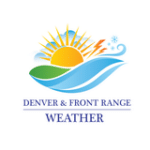Winter can be tough on your roof, especially with Colorado’s harsh weather. Without the right precautions, snow and ice can lead to expensive damage. That’s why following these essential roof preparation tips for winter is crucial to safeguard your home and prevent costly repairs.
To ensure your roof is winter-ready, follow these essential roof preparation tips for winter: Clear debris from the roof and gutters to prevent ice dams, Inspect and repair shingles to ensure proper coverage, install attic insulation to prevent heat loss and roof damage, trim overhanging branches to avoid snow accumulation, and schedule a professional roof inspection to identify and address hidden issues.
- Clear Your Roof and Gutters: The First Step in Winter Protection
- Roof Inspection 101: Finding and Repairing Shingle Damage
- Roof Preparation Tips for Winter: Strengthening Your Insulation
- Trim Overhanging Branches: Prevent Unnecessary Risks
- Schedule a Professional Roof Inspection for Total Peace of Mind
- Secure Your Roof for Winter
Key Takeaway:
- Clearing your roof and gutters helps prevent ice dams and water damage, setting a solid foundation for the rest of your roof preparation efforts.
- Regularly inspect and repair shingles to maintain a protective barrier against winter elements. Early repairs prevent more costly damage down the line.
- Quality insulation is one of the most effective roof preparation tips for winter, as it prevents ice dams, reduces energy costs, and increases overall home comfort.
- Trimming overhanging branches is a proactive way to prevent damage from falling debris, keeping your roof intact and safe.
- A professional inspection provides comprehensive insights into your roof’s health, reinforcing your winter preparation strategy and giving you peace of mind.
These steps are just the start. Keep reading for a comprehensive guide to protecting your home throughout the cold season.
Clear Your Roof and Gutters: The First Step in Winter Protection
Debris on your roof and in your gutters may seem like a minor issue, but as winter approaches, it can become a significant threat. According to the Insurance Information Institute, water damage from ice dams accounts for a large percentage of winter home insurance claims, with average claims amounting to over $10,000. The key to prevention is a simple yet thorough cleaning of your roof and gutters. As part of your roof preparation tips for winter, here are a few steps to get started:
- Use a leaf blower or roof rake to remove debris from the roof.
- Clear out gutters and downspouts to ensure water can flow freely.
- Install gutter guards to keep out leaves and debris, minimizing future build-up.
For safety, it’s recommended to use a stable ladder and wear non-slip shoes when working at heights. If you’re not comfortable doing this yourself, consider professional gutter cleaning services to avoid the risks of falling or causing roof damage.
Roof Inspection 101: Finding and Repairing Shingle Damage
As part of your roof preparation tips for winter, a detailed inspection of your roof’s shingles is essential. Shingles are your home’s first line of defense against snow and ice. Damaged or missing shingles can lead to leaks, mold growth, and structural issues. Here’s what to look for:
- Cracked or curling shingles: These are signs of weathering and may need replacement.
- Loose or missing shingles: This could expose your roof to leaks and further damage.
- Granule loss: Excessive granules in your gutters indicate shingles are wearing out.
If you spot these issues, take action immediately. Small repairs can be managed through DIY kits available at most hardware stores. However, for extensive damage, hiring a roofing professional is the most effective way to ensure your roof remains in optimal condition.
Roof Preparation Tips for Winter: Strengthening Your Insulation
Proper insulation plays a vital role in preparing your roof for winter. When your attic is poorly insulated, warm air escapes, melting the snow on your roof. The melted snow then refreezes at the roof’s edge, creating ice dams. According to the U.S. Department of Energy, homeowners can save up to 15% on heating and cooling costs by adequately insulating their homes. Here are some roof preparation tips for winter to address insulation effectively:
- Inspect your attic’s current insulation: Look for signs of gaps or thinning areas.
- Upgrade to high R-value insulation: Materials like spray foam or blown-in cellulose offer excellent thermal resistance.
- Seal gaps around ducts and vents: Prevent heat from escaping and contributing to uneven roof temperatures.
By improving your attic insulation, you’ll not only protect your roof from winter damage but also enhance energy efficiency, keeping your home warmer.
Trim Overhanging Branches: Prevent Unnecessary Risks
Trees can be both an asset and a hazard for homeowners. During winter, overhanging branches pose the risk of snow accumulation, which can eventually break and fall onto your roof. Additionally, strong winds or heavy snowfall can dislodge branches, causing roof and gutter damage. Incorporating these roof preparation tips for winter will help minimize risks:
- Trim branches that are close to the roof: Aim to maintain a distance of at least 6-10 feet between the roof and tree limbs.
- Remove weak or dead branches: These are more prone to breaking under the weight of snow and ice.
- Consider professional tree trimming services: Especially for larger trees or hard-to-reach branches.
Addressing this concern before the snow falls ensures your roof won’t be subjected to avoidable damage throughout the winter season.
Schedule a Professional Roof Inspection for Total Peace of Mind
Even the most thorough DIY checks may overlook hidden problems. To fully winterize your roof, consider scheduling a professional roof inspection. Roofing professionals have the expertise to identify underlying issues like soft spots, leaks, or ventilation problems that could worsen with winter’s arrival. During an inspection, professionals will:
- Examine shingle condition: Detecting early signs of wear and tear.
- Check flashing and seals: Ensuring that vulnerable areas, like chimneys and skylights, are properly sealed.
- Inspect attic ventilation: Proper ventilation reduces moisture buildup, preventing mold growth.
This service not only adds a layer of security to your home but also aligns with a smart, long-term financial plan by minimizing the risk of unexpected repairs.
Secure Your Roof for Winter
Winter roof preparation is essential for Colorado homeowners facing snow, ice, and fluctuating temperatures. By incorporating these essential roof preparation tips for winter into your home maintenance routine—clearing debris, inspecting shingles, reinforcing insulation, trimming branches, and scheduling professional inspections—you set the stage for a safer, worry-free winter.
Ready to ensure your roof is winter-ready? Contact Just Roofs & Gutters today to get your online roof estimate in seconds. With a little preparation, you can enjoy a warm, damage-free winter in your home.
How can I safely remove snow from my roof in winter?
Snow removal is important for protecting your roof during winter, but it must be done with caution to avoid damage. Use a roof rake with a long handle to clear snow while standing on the ground, which helps you avoid the need to climb onto the roof. Focus on removing snow from the roof edges to prevent ice dams, but leave a small layer of snow to protect the shingles. Avoid using metal shovels or sharp tools that could damage the roof’s surface, and work in small sections, removing snow gradually to prevent overexertion and minimize risks.
Can ice dams damage my roof and gutters?
Yes, ice dams can cause serious damage. When ice accumulates on the roof’s edge, it prevents melting snow from draining, leading to water leaks and potential roof or gutter damage. Proper insulation and regular gutter maintenance are key to preventing ice dams.
Is roof maintenance necessary if my roof was recently installed?
Even new roofs need maintenance to ensure they withstand harsh winter weather. Check for debris, inspect flashing around chimneys, and ensure gutters are clear to prevent potential issues. Regular upkeep extends the lifespan of any roof, new or old.





